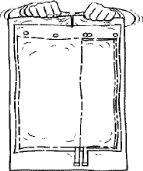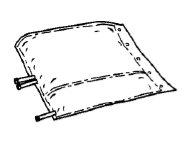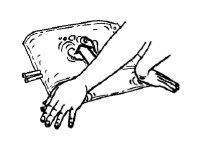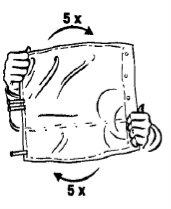
ПРИОСОЛ БЕЗ КАЛИЯ РАСТВОР ДЛЯ ГЕМОФИЛЬТРАЦИИ
Спросите врача о рецепте на ПРИОСОЛ БЕЗ КАЛИЯ РАСТВОР ДЛЯ ГЕМОФИЛЬТРАЦИИ

Инструкция по применению ПРИОСОЛ БЕЗ КАЛИЯ РАСТВОР ДЛЯ ГЕМОФИЛЬТРАЦИИ
Введение
Инструкция: информация для пациента
Приосол без калия раствор для гемофильтрации
Прочитайте внимательно всю инструкцию перед тем, как это лекарство будет введено вам, поскольку в ней содержится важная информация для вас.
- Сохраните эту инструкцию, поскольку вам может потребоваться прочитать ее снова.
- Если у вас есть какие-либо вопросы, проконсультируйтесь с вашим врачом или фармацевтом.
- Если вы испытываете побочные эффекты, проконсультируйтесь с вашим врачом или фармацевтом, даже если это побочные эффекты, которые не указаны в этой инструкции. См. раздел 4.
Содержание инструкции
- Что такое Приосол без калия и для чего он используется
- Что вам нужно знать перед тем, как Приосол без калия будет введен вам
- Как использовать Приосол без калия
- Возможные побочные эффекты
- Хранение Приосола без калия
- Содержание упаковки и дополнительная информация
1. Что такое Приосол без калия и для чего он используется
Приосол без калия - это раствор для гемофильтрации. Он используется у пациентов с острым повреждением почек, когда почки не могут удалять продукты распада из крови. Гемофильтрация - это процедура, которая используется для удаления продуктов распада из организма, которые обычно выводятся почками с мочой. Раствор корректирует баланс жидкости и обеспечивает восстановление потери солей (электролитов) после лечения.
2. Что вам нужно знать перед тем, как Приосол без калия будет введен вам
Приосол без калия не должен быть введен, если:
- у вас низкий уровень калия в крови (гипокалиемия)
- у вас низкий уровень кислотных веществ в крови (метаболический алкалоз)
Процедура гемофильтрации не должна проводиться, если у вас:
- почки повреждены и у вас высокий уровень обмена веществ (гиперкатаболическое состояние), в этом случае накопление продуктов распада в вашем организме не может быть исправлено гемофильтрацией
- у вас плохой кровоток в месте введения канюли в вену
- у вас высокий риск кровотечения из-за приема лекарств, предотвращающих свертывание крови (системная антикоагуляция)
Предостережения и меры предосторожности
Проконсультируйтесь с вашим врачом или фармацевтом перед тем, как Приосол без калия будет введен вам.
До и во время гемофильтрации будут контролироваться артериальное давление и баланс жидкости, солей (электролитов), кислотно-щелочного баланса и функции почек. Будут регулярно контролироваться уровни сахара и фосфатов в крови.
Кроме того, будут контролироваться уровни калия в крови до и во время гемофильтрации.
Использование Приосола без калия с другими лекарствами
Сообщите вашему врачу или фармацевту, если вы принимаете, недавно принимали или можете принимать другие лекарства.
Уровень других лекарств в вашей крови может уменьшиться во время гемофильтрации, что будет учитываться вашим врачом.
Взаимодействия с другими лекарствами могут быть избегнуты с помощью правильной дозы раствора для гемофильтрации и тщательного контроля.
Будут учитываться следующие взаимодействия:
- Введение препаратов в отделении интенсивной терапии может изменить состав крови и ее водный баланс.
- Токсические эффекты некоторых лекарств, используемых для лечения сердечной недостаточности (препараты, содержащие дигиталис), могут не проявляться, если уровни калия или магния слишком высоки, или уровни кальция слишком низки. Когда эти уровни корректируются с помощью гемофильтрации, могут появиться токсические эффекты и вызвать, например, нарушения сердечного ритма. Если у вас низкие уровни калия или высокие уровни кальция в крови, дигиталис может вызвать токсические эффекты при дозах, меньших чем обычно используемые для лечения.
- Витамин D и препараты, содержащие кальций, могут увеличить риск повышения уровня кальция в крови до аномально высоких значений (гиперкальциемия).
- Использование дополнительного гидрогенкарбоната натрия может увеличить риск низких уровней кислот в крови (метаболический алкалоз).
Беременность, лактация и фертильность
Если вы беременны или кормите грудью, считаете, что можете быть беременной или планируете стать беременной, проконсультируйтесь с вашим врачом или фармацевтом перед тем, как Приосол без калия будет введен вам.
На данный момент нет достаточных данных о использовании растворов для гемофильтрации во время беременности. Однако, поскольку все компоненты этого препарата являются натуральными веществами, которые просто заменяют те же вещества, которые теряются организмом во время гемофильтрации, не ожидается рисков для ребенка во время беременности и лактации, а также влияния на фертильность.
Вождение и использование машин
Это лекарство обычно вводится пациентам, находящимся в больнице или отделении диализа, что исключает вождение и использование машин.
3. Как использовать Приосол без калия
Это лекарство будет введено вам только под руководством врача с опытом в техниках гемофильтрации.
Ваш врач решит, какая доза подходит вам, учитывая ваше клиническое состояние, вес и метаболическое состояние. Если не указано иное, для пациентов любого возраста рекомендуется скорость фильтрации 20-25 мл/кг веса тела в час для удаления тех веществ, которые в нормальных условиях выводятся с мочой.
Вам будет введен готовый раствор для гемофильтрации через систему трубок аппарата для гемофильтрации (внешний кровоток) с помощью насоса для перфузии.
Лечение острой почечной недостаточности проводится в течение ограниченного периода времени и заканчивается, когда функция почек полностью восстановлена.
Если вам будет введено больше Приосола без калия, чем рекомендовано
Не описаны ситуации с риском для жизни после введения рекомендованной дозы этого препарата. Введение может быть немедленно прекращено, если это необходимо.
Несбалансированное введение может привести к избытку или дефициту жидкости в организме (гипергидратация или дегидратация). Это состояние становится очевидным через появление изменений артериального давления или пульса.
Если будет введено слишком большое количество раствора для гемофильтрации, может произойти передозировка гидрогенкарбоната. Это может привести к аномально низким уровням кислот в крови (метаболический алкалоз), уменьшению количества растворенного кальция в крови (снижение ионизированного кальция) или мышечным спазмам (тетания).
Передозировка может вызвать сердечную недостаточность и/или легочную конгестию и может нарушить кислотно-щелочной баланс и баланс электролитов.
Ваш врач решит, какой подходящий метод лечения.
Если у вас есть какие-либо другие вопросы об использовании этого препарата, проконсультируйтесь с вашим врачом или фармацевтом.
4. Возможные побочные эффекты
Как и все лекарства, это лекарство может вызывать побочные эффекты, хотя не все люди испытывают их.
На данный момент не описаны случаи побочных эффектов, связанных с этим препаратом. Однако могут возникнуть следующие побочные эффекты. Частота этих побочных эффектов неизвестна (не может быть оценена на основе доступных данных):
Избыток или дефицит жидкости в организме (гипергидратация или дегидратация), аномальные уровни электролитов, низкие уровни фосфата в крови (гипофосфатемия), высокие уровни сахара в крови (гипергликемия), аномально низкие уровни кислот в крови (метаболический алкалоз), высокое или низкое артериальное давление (гипертония или гипотония), тошнота, рвота и мышечные спазмы.
Сообщение о побочных эффектах
Если вы испытываете любой побочный эффект, проконсультируйтесь с вашим врачом или фармацевтом, даже если это побочные эффекты, которые не указаны в этой инструкции. Вы также можете сообщить об этом напрямую через национальную систему уведомления, указанную в Приложении V. Сообщая о побочных эффектах, вы можете способствовать предоставлению более полной информации о безопасности этого препарата.
5. Хранение Приосола без калия
Храните это лекарство вне поля зрения и досягаемости детей.
Не вводите это лекарство после даты истечения срока годности, указанной на мешке и коробке после "СГ". Дата истечения срока годности - последний день месяца, указанного.
Условия хранения
Не храните при температуре выше 25°C.
Не охлаждайте или замораживайте.
Условия хранения после приготовления раствора для гемофильтрации
Смешанный продукт должен быть использован немедленно. Смешанный продукт физически и химически стабилен в течение 24 часов при 25°C.
Лекарства не должны выбрасываться в канализацию или мусор. Поместите упаковку и лекарства, которые вам больше не нужны, в пункт SIGRE аптеки. Если у вас есть сомнения, проконсультируйтесь с вашим фармацевтом, как избавиться от упаковки и лекарств, которые вам больше не нужны. Таким образом, вы поможете защитить окружающую среду.
6. Содержание упаковки и дополнительная информация
Состав Приосола без калия
Активные вещества: | Малая камера Раствор электролитов | Большая камера Раствор бикарбоната | ||
555 мл содержат | На 1.000 мл | 4.445 мл содержат | На 1.000 мл | |
Хлорид натрия | 2,34 г | 4,21 г | 27,47 г | 6,18 г |
Хлорид кальция дигидрат | 1,10 г | 1,98 г | — | — |
Хлорид магния гексагидрат | 0,51г | 0,91 г | — | — |
Глюкоза моногидрат, эквивалентная глюкозе безводной | 5,49 г 5,0 г | 9,90 г 9,0 г | — | — |
Гидрогенкарбонат натрия | — | — | 15,96 г | 3,59 г |
Электролиты: | [ммоль/ камера] | [ммоль/л] | [ммоль/ камера] | [ммоль/л] |
Na+ | 40,0 | 72 | 660 | 149 |
Ca2+ | 7,5 | 13,5 | — | — |
Mg2+ | 2,5 | 4,5 | — | — |
Cl- | 75,0 | 135 | 470 | 106 |
HCO3- | — | — | 190 | 42,8 |
Теоретическая осмолярность [мОсм/л] | 275 | 297 |
Состав раствора для гемофильтрации после смешивания:
1.000 мл готового раствора для гемофильтрации содержат [ммоль/л]:
Na+ 140
Ca2+ 1,5
Mg2+ 0,5
Cl- 109
HCO3- 35,0
Глюкоза безводная 5,6 (эквивалентно 1,0 г)
Теоретическая осмолярность [мОсм/л] 292
pH 7,0-8,0
Другие компоненты:
Раствор электролитов (малая камера)
Хлоридная кислота 25% (для коррекции pH), вода для инъекций
Раствор бикарбоната (большая камера)
Диоксид углерода (для коррекции pH), вода для инъекций
Внешний вид продукта и содержание упаковки
Раствор для гемофильтрации.
Прозрачный и бесцветный раствор, не содержащий видимых частиц.
Это лекарство поставляется в мешке с двумя камерами. При смешивании двух растворов, открывая раздел между двумя камерами, получается готовый раствор для гемофильтрации.
Две мешки по 5.000 мл (мешки с двумя камерами, 4.445 мл и 555 мл) в коробке.
Владелец разрешения на продажу и производитель
Владелец разрешения на продажу
- Braun Avitum AG
Schwarzenberger Weg 73-79
34212 Мельзунген
Германия
Производитель
- Braun Avitum AG
Kattenvenner Str. 32
49219 Гландорф
Германия
Это лекарство разрешено к продаже в странах-членах Европейского экономического пространства под следующими названиями:
Австрия, Германия, Люксембург: Duosol ohne Kalium Hämofiltrationslösung
Болгария: ?????? ??? ?????????? ?? ?????, ??????? ?? ?????????????
Хорватия: Duosol bez kalija otopina za hemofiltraciju
Чехия: Duosol bez kalia
Дания, Норвегия, Швеция: Duosol Kaliumfri
Эстония: Duosol ilma kaaliumita hemofiltratsioonilahus
Финляндия: Duosol sine Kalium hemofiltraationeste
Франция: Subsol sans potassium, solution pour hémofiltration hémodialyse et hémodiafiltration
Греция: Duosol without Potassium δι?λυμα αιμοδιαδι?θησης
Ирландия: Nefrosol solution for haemofiltration
Италия: Duosol senza potassio soluzione per emofiltrazione
Латвия: Duosol bez kalija škidums hemofiltracijai
Литва: Duosol K 0 hemofiltracijos tirpalas
Польша: Duosol nie zawierajacy potasu
Португалия: Duosol sem potássio, solução para hemofiltração
Румыния: Nefrosol fara potasiu, solutie pentru hemofiltrare
Словения: Duosol brez kalija raztopina za hemofiltracijo
Испания: Приосол без калия раствор для гемофильтрации
Нидерланды: Duosol zonder Kalium, oplossing voor hemofiltratie
Великобритания: Duosol without Potassium solution for haemofiltration
Дата последнего обновления этой инструкции: сентябрь 2018 г.
--------------------------------------------------------------------------------------------------------------------
Эта информация предназначена только для медицинских специалистов:
Инструкции по приготовлению раствора для гемофильтрации
Упаковка и раствор должны быть визуально осмотрены перед использованием. Растворы для гемофильтрации должны использоваться только в том случае, если упаковка (внешняя оболочка и мешок с двумя камерами), раздел peelи соединители не повреждены и находятся в целости, и если раствор прозрачный, бесцветный и не содержит видимых частиц.
Удалите внешнюю оболочку только непосредственно перед использованием.
|
|
|
|
|
|
|
|
Введение раствора для гемофильтрации
Раствор для гемофильтрации должен быть нагрет до температуры тела с помощью встроенного или внешнего нагревателя. Раствор не должен быть введен, если он находится ниже комнатной температуры.
Во время применения этого лекарства в редких случаях наблюдалась осаждение карбоната кальция в трубках, особенно возле насоса и нагревательного блока. Поэтому во время гемофильтрации необходимо внимательно осматривать трубки визуально каждые 30 минут, чтобы убедиться, что раствор в системе трубок прозрачный и не содержит осадков. Осаждение может произойти также с значительным запозданием после начала лечения. Если обнаружены осадки, трубки должны быть заменены немедленно, и пациент должен быть тщательно отслежен.
Для одноразового использования. Любая оставшаяся часть раствора и поврежденная упаковка должны быть утилизированы.
- Страна регистрации
- Активное вещество
- Требуется рецептДа
- Производитель
- Информация носит справочный характер и не является медицинской рекомендацией. Перед приемом любых препаратов проконсультируйтесь с врачом. Oladoctor не несет ответственности за медицинские решения, принятые на основе этого контента.
- Аналоги ПРИОСОЛ БЕЗ КАЛИЯ РАСТВОР ДЛЯ ГЕМОФИЛЬТРАЦИИПроизводитель: Nikkiso BelgiumТребуется рецептПроизводитель: Nikkiso BelgiumТребуется рецептПроизводитель: Nikkiso BelgiumТребуется рецепт
Аналоги ПРИОСОЛ БЕЗ КАЛИЯ РАСТВОР ДЛЯ ГЕМОФИЛЬТРАЦИИ в других странах
Лучшие аналоги с тем же действующим веществом и терапевтическим эффектом.
Аналог ПРИОСОЛ БЕЗ КАЛИЯ РАСТВОР ДЛЯ ГЕМОФИЛЬТРАЦИИ в Польща
Аналог ПРИОСОЛ БЕЗ КАЛИЯ РАСТВОР ДЛЯ ГЕМОФИЛЬТРАЦИИ в Україна
Врачи онлайн по ПРИОСОЛ БЕЗ КАЛИЯ РАСТВОР ДЛЯ ГЕМОФИЛЬТРАЦИИ
Консультация по дозировке, побочным эффектам, взаимодействиям, противопоказаниям и продлению рецепта на ПРИОСОЛ БЕЗ КАЛИЯ РАСТВОР ДЛЯ ГЕМОФИЛЬТРАЦИИ – по решению врача и с учетом местных правил.


















